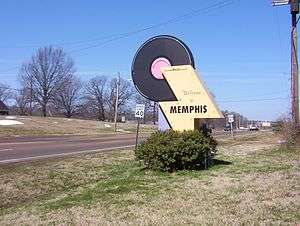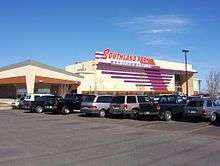National Ornamental Metal Museum

The Metal Museum is the only institution in the United States devoted exclusively to the advancement of the art and craft of fine metalwork. This is achieved through exhibitions, collections, conservation, restoration and consulting services, classes, internship opportunities, artist residencies and apprenticeships, research and onsite fabrication of artwork and architectural elements.
The value of the Metal Museum extends well beyond its exhibitions and facilities. As the only institution of its kind, it leads the way in recognizing and promoting the careers of metalsmiths. Each year we honor a Master Metalsmith whose work and influence extends well beyond the metal arts field. Former Master Metalsmiths include Tom Joyce, Mary Lee Hu and Marilyn da Silva, among others. Our Tributaries series, established in 2008, recognizes professional artists with small solo exhibitions of current work. Both programs celebrate talent and diversity within the field and include artists working in a range of materials, including ferrous and nonferrous metals, hollowware, jewelry and enameling. Other exhibitions feature traditional and contemporary examples of fine metalwork by national and international smiths.
The Museum also serves as a gathering place or “home” for the metalsmith community. With strong ties to metalsmithing and craft programs throughout the country, the Museum serves as an educational facility and training ground for young artists. Each year the Museum hosts Repair Days, a three-day fund-raiser during which volunteer metalsmiths from around the country repair metal items to raise money for Museum programs. More than just a fund-raiser, Repair Days serves as an opportunity for emerging and established metal artists from around the world to network and exchange ideas. In addition to hands-on training, there are demonstrations and gallery talks.
The Metal Museum has become the center for metal arts - a place that actively promotes artists and their work and plays a vital role in the recognition and collection of metal work and the teaching of innovative practices. It is a place that serves an international community of artists and artisans creating work that is steadily building a strong following and important place within the contemporary art dialog.
History
The Metal Museum is located on a 3.2 acre site overlooking the Mississippi River just south of downtown Memphis. The property, which includes three historic buildings, had been part of a public health service hospital. After the hospital closed in the mid-1960s, it was deeded to the City of Memphis through the Heritage and Conservation Act. As a non-profit organization with an educational focus, the Metal Museum met the usage requirements and a lease was obtained in July 1976. Two years later, renovation of two buildings began and the Metal Museum opened to the public on February 5, 1979. Since that time, over $2.5 million dollars have gone into developing the property, including construction of the blacksmith shop, the Lawler Foundry and the repairs and restoration lab, the renovation of the library and the installation of a gazebo. This figure does not include countless hours of volunteer labor and contributed goods and services.
For nearly thirty years, the Metal Museum was led by a blacksmith and artist, who by default was also an administrator, curator, mechanic, plumber and reluctant fund-raiser. Under James Wallace’s leadership, the three ramshackle buildings on the site have become a residence, housing artists, a museum and a library. The success of the Metal Museum is due in large part to his perseverance and the community of artists and patrons he gathered around him. At the end of 2007, after completing the renovation of the third and final building, he retired to focus on his own work.
The Metal Museum is located on the western half of a former United States Marine Hospital. The history of the hospital dates back to July 16, 1798, when President John Adams established the Marine Hospital Service. Designed to care for sick and disabled seamen, it was the precursor to the U.S. Public Health Service. The first Marine Hospital built to serve this region was located in Napoleon, AR, but washed away in the 1870s when the Mississippi River changed course. The current site was selected in 1881. At that time this area, known as Fort Pickering, was a separate town, eighteen years older, and at that time larger, than Memphis.
The hospital opened in 1884 and consisted of six buildings – the surgeon’s house, a stable, the executive building, two wards and the nurses’ building. The facility was originally used to treat Civil War soldiers and to conduct scientific research in hopes of finding a cure for yellow fever. Only two of the original buildings survive today, the nurses’ building (located on the east side of the 1930s hospital building) and the executive building (the white building that houses the Museum’s library and permanent collection). Both are listed on the National Register of Historic Places. During the 1930s, several new Works Progress Administration buildings were added to the site. To make room for the new buildings, the wards and stables were demolished and the executive and the nurses’ buildings, both of which faced the street, were moved three hundred feet to their current locations on wagons pulled by mules.
Across the street from the Museum is Chickasaw Heritage Park. Once the fortress of Chickasaw chief Chisca, it features two ceremonial mounds built by Paleo-Indians in the 1500s. During the Civil War the mounds were hollowed out and used for gun emplacements and munitions storage. This site, previously known as DeSoto Park, is believed to be where Spanish explorer Hernando DeSoto first viewed the Mississippi River in 1541.
Several forts built by the French, Spanish and Americans were located in this area. The United States’ first was Fort Adams, believed to be located where the Exxon plant now stands. It was, however, too close to the river and as such was susceptible to flood and malaria. In 1801, the fort was renamed and moved to just above the Indian mounds. Known as Fort Pickering, it was named after George Washington’s Secretary of War, Thomas Pickering. It quickly lost its importance after the United States purchased the Louisiana Territory and was mostly abandoned by 1806. In 1809 when Lewis Meriwhether of Lewis and Clark passed through, the Fort was under the command of Zachary Taylor, who was to become the 12th President of the United States.
Fort Pickering is now known as the residential subdivision French Fort, which has been here since the 1960s.
Exhibits

The museum has over 3000 items in its permanent collection, and also hosts travelling exhibitions. There is also a working smithy and foundry on site. In addition to displaying metalwork inside the museum they also offer hands-on classes in the museums workshops.
Repair Days
Every Fall, they hold a Repair Days Weekend, where volunteer metalsmiths from across the country will repair virtually any sort of metal object while the public watches. Estimates are free, actual prices for repairs are generally low as it is a popular fundraising event. All proceeds from the repair work benefit the Museum.
See also
References
| Wikimedia Commons has media related to National Ornamental Metal Museum. |
- Dellinger, M. Forging its Own Future. Smithsonian Magazine, May 2006 (URL accessed 11 June 2006).
External links
Coordinates: 35°7′24″N 90°4′31″W / 35.12333°N 90.07528°W






